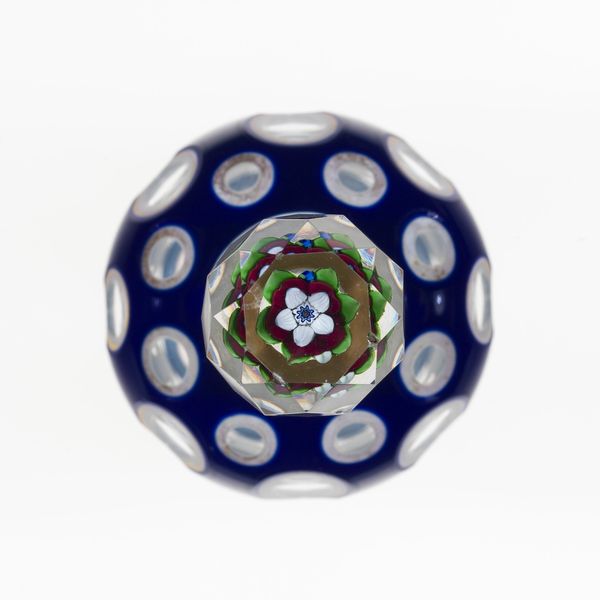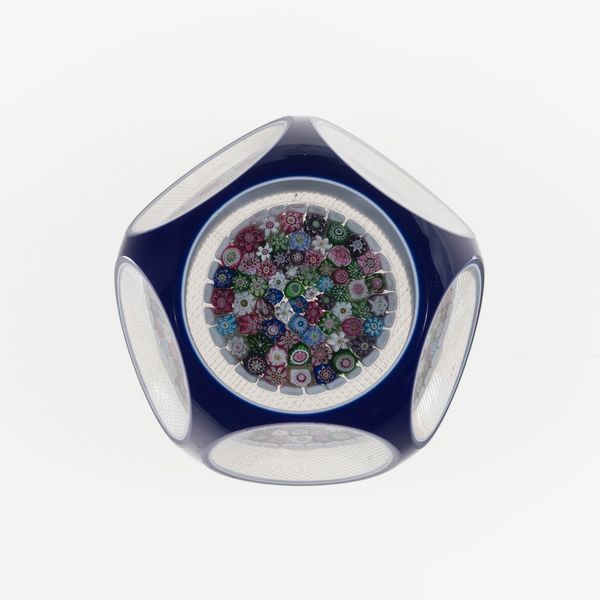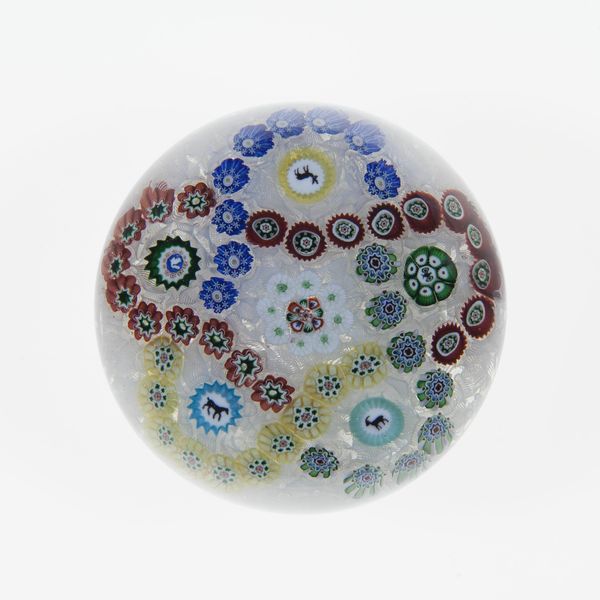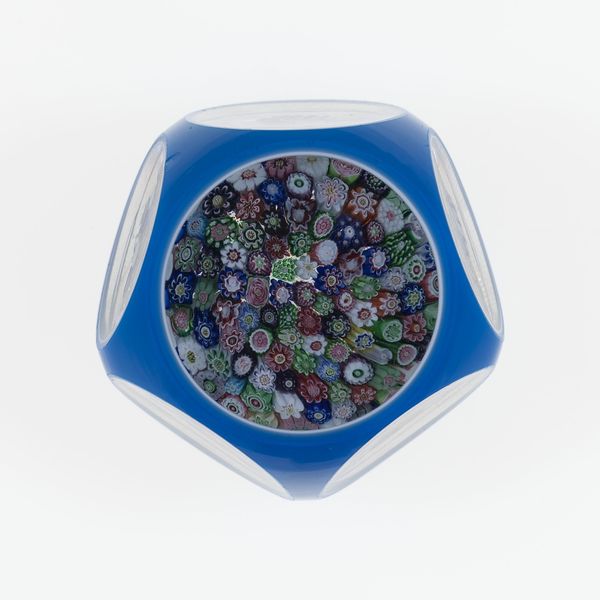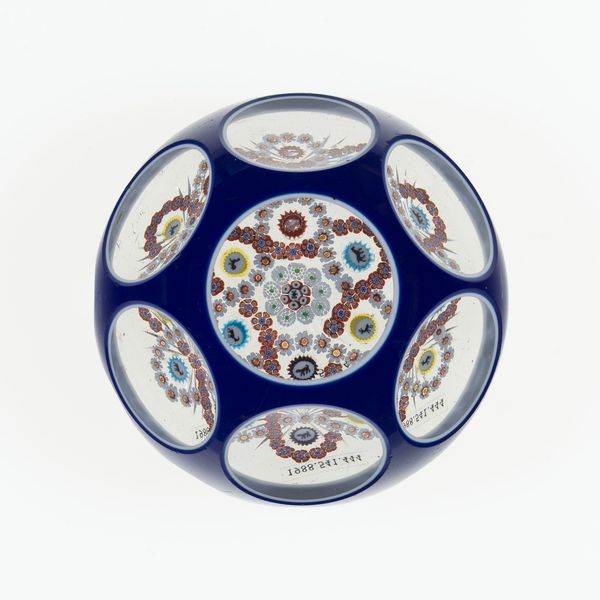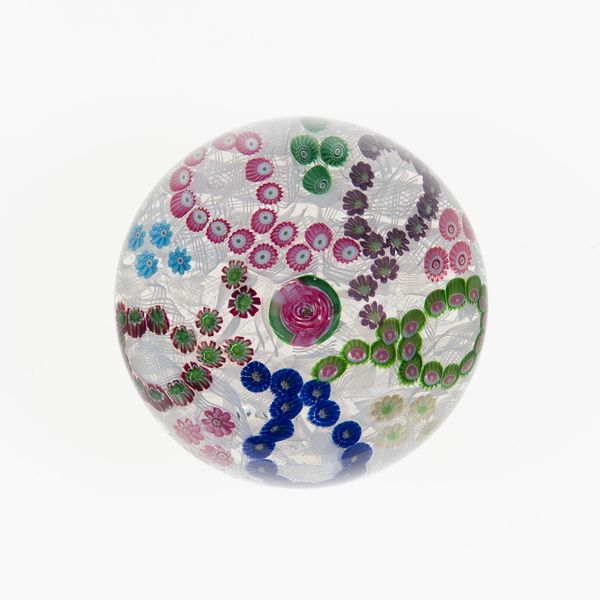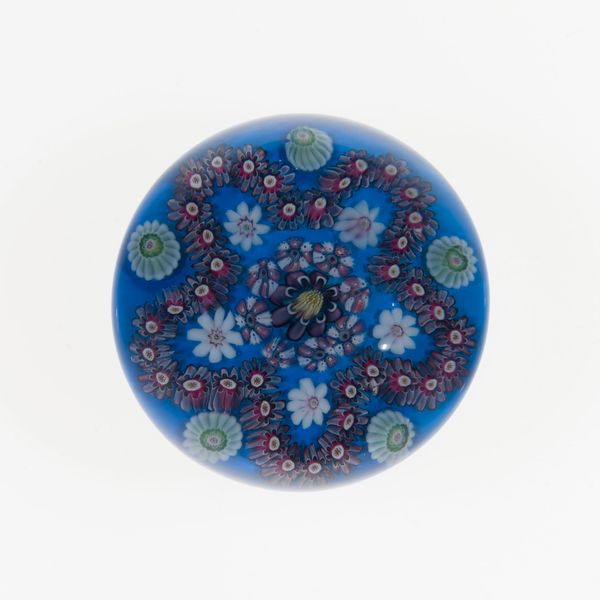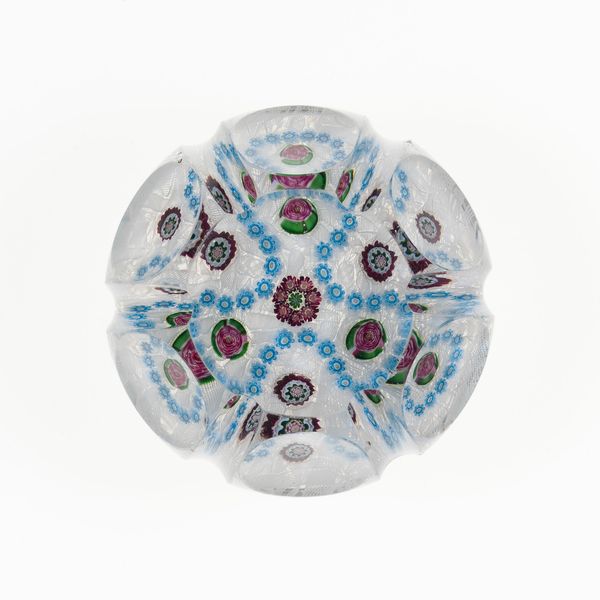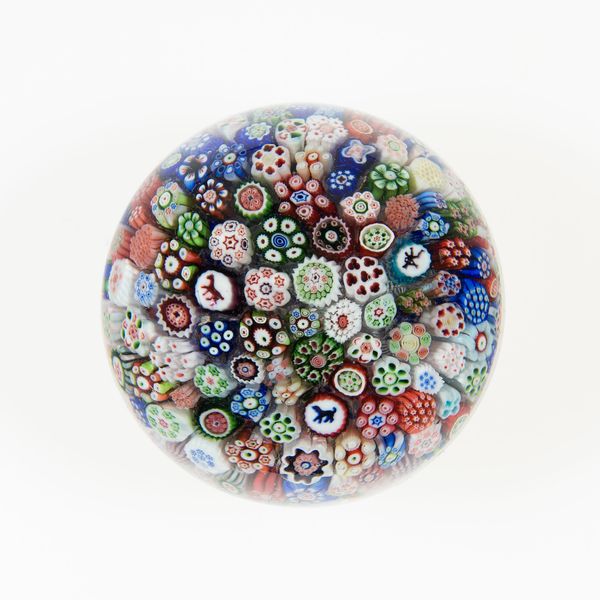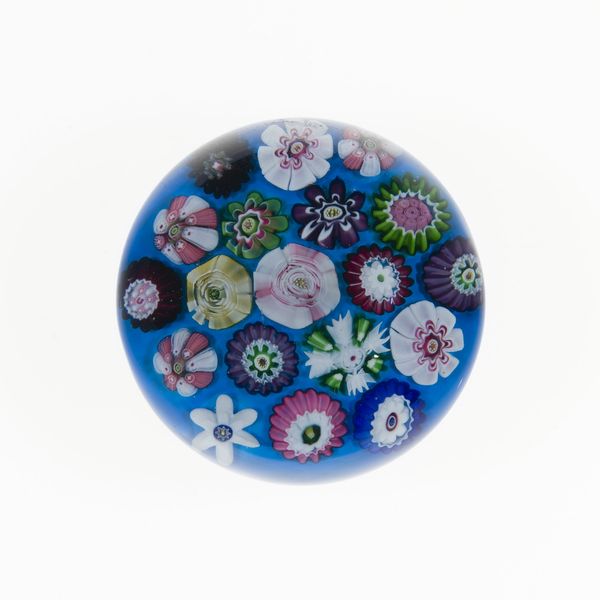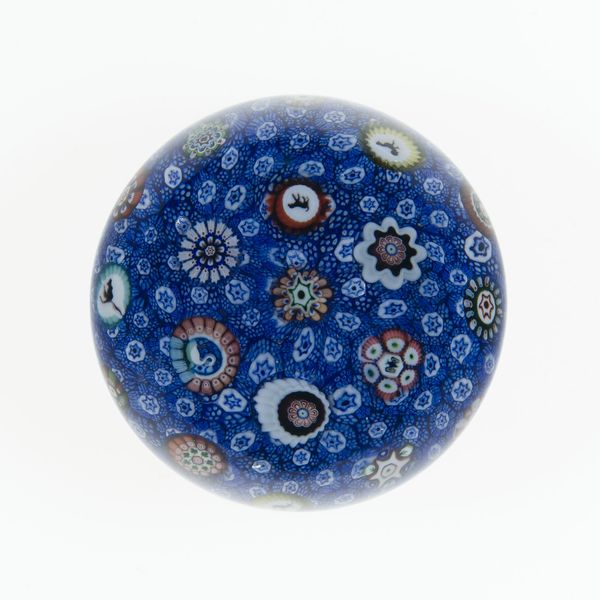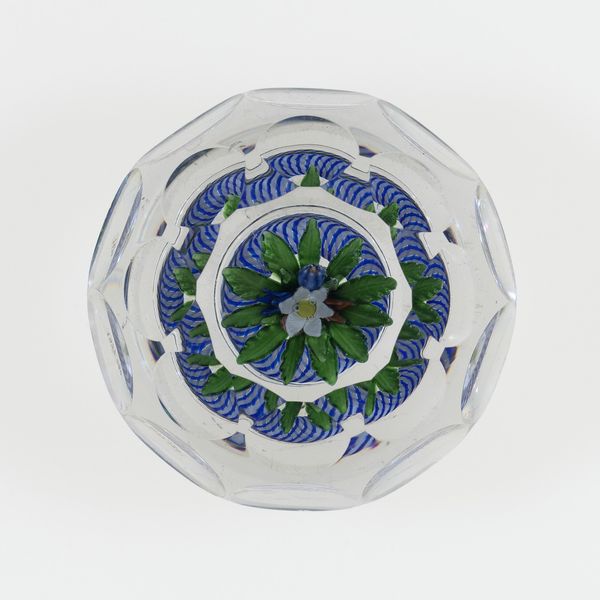
glass, sculpture
#
glass
#
geometric
#
sculpture
#
decorative-art
Dimensions: Diam. 7.3 cm (2 7/8 in.)
Copyright: Public Domain
Editor: We're looking at "Paperweight," made around 1845 to 1860 by Baccarat Glassworks. It's currently housed here at the Art Institute of Chicago. What strikes me most is its almost otherworldly symmetry and the complexity within such a small form. What do you see when you examine it? Curator: I see a masterful exercise in form and composition. The spherical shape, divided into distinct sections, immediately establishes a formal geometric structure. The blue and white colour palette, while restrained, creates a stark contrast that accentuates the internal detail. Note the strategic placement of the millefiori within the clear glass—a conscious choice to create depth and visual intrigue. Editor: Millefiori is new to me. Is that the floral arrangement at the center of the paperweight? Curator: Indeed. Each individual glass cane is carefully crafted and arranged, forming an intricate mosaic. Its radial symmetry, contained within the larger sphere, adds a layer of complexity. Consider, too, how the refractive properties of the glass distort and amplify the internal structure, playing with the viewer's perception of space. Do you observe how light interacts with the surface? Editor: Yes, the way light catches and bends within the glass definitely enhances the shapes and colours of those tiny "flowers". The clear sections almost act as lenses. It's like peering into a different world. Curator: Precisely. The artist's command of materials is evident. It transcends mere function to become a study of form, light, and perception. The interplay of internal and external structures defines its unique aesthetic appeal. Editor: This has really altered how I understand glass as a sculptural medium. Thanks, that’s incredibly insightful! Curator: And thank you; considering these fundamental aspects together opens new avenues for interpretation, underscoring its enduring impact.
Comments
No comments
Be the first to comment and join the conversation on the ultimate creative platform.
